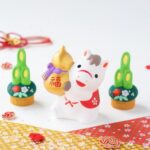
The Difference Between 覚える and 思い出す : “Remember” in Japanese
The Difference Between 覚える(おぼえる) and 思い出す(おもいだす): “Remember” in Japanese
When learning Japanese, it’s easy to get confused by words that have similar meanings but are used in different contexts. A common pair of words that can confuse beginners is 覚える (“oboeru”) and 思い出す (“omoidasu”). Both of these verbs are often translated as “remember” in English, but they have different uses and meanings in Japanese. In this blog post, we’ll break down the difference between these two verbs to help you use them correctly in your conversations.
覚える (Oboeru)
覚える (“oboeru”) means “to memorize,” or “to retain information in your mind.” It’s used when you are in the process of learning something new, committing it to memory, or trying to remember something you’ve just learned. Essentially, 覚える is used when you want to actively retain or memorize new information.
Think of 覚える as the act of putting something into your memory. You use it when you’re studying vocabulary, learning new skills, or committing someone’s name to memory. It’s often used in situations involving learning and memory storage.
Example sentences:
- 新しい言葉を覚えるのは大変です。
- (atarashii kotoba o oboeru no wa taihen desu.)
- “Remembering new words is difficult.”
- 彼女の名前を覚えました。
- (Kanojo no namae o oboemashita.)
- “I remembered her name.”
- これをどうやって作るか覚えてください。
- (Kore o dou yatte tsukuru ka oboete kudasai.)
- “Please remember how to make this.”
In these examples, 覚える is used to express the idea of memorizing or learning something new.
思い出す (Omoidasu)
思い出す (“omoidasu”) means “to recall” or “to bring back to mind.” It is used when you want to say that you are actively trying to recall something from your memory. 思い出す is more about pulling out information that’s already stored in your memory, something you have learned or experienced before.
Think of 思い出す as retrieving a memory that is already there. You use it when you’re trying to recall an event from the past, such as a childhood memory, something you forgot, or someone’s name that suddenly comes to mind.
Examples of 思い出す (Omoidasu)
- こどもの時のことを思い出しました。
- (Kodomo no toki no koto o omoidashita.)
- “I remembered something from my childhood.”
- 彼の名前を思い出すことができませんでした。
- (Kare no namae o omoidasu koto ga dekimasen.)
- “I can’t remember his name.”
- 久しぶりに友達に会って、昔のことをたくさん思い出しました。
- (Hisashiburi ni tomodachi ni atte, mukashi no koto o takusan omoidashita.)
- “I met an old friend, and it brought back many memories from the past.”
In these examples, 思い出す is used to express recalling something that was already in the memory but not actively thought of at that moment.
Key Differences Between 覚える and 思い出す
- Action vs. Recall
- 覚える (oboeru) is about the action of learning, memorizing, or retaining information. It’s the process of putting something into your memory.
- 思い出す (omoidasu) is about recalling, remembering, or retrieving information that is already stored in your memory.
- When to Use Each Word
- Use 覚える when you are talking about learning something new, trying to commit something to memory, or getting information into your head.
- Use 思い出す when you are trying to recall something from the past, such as a memory, someone’s name, or an experience.
Visualizing the Difference
To help visualize the difference between these two verbs, think about your brain as a library. When you use 覚える (“oboeru”), you are adding a new book to the library shelves—storing new information in your memory. When you use 思い出す (“omoidasu”), you are finding that book on the shelf and pulling it out to read again—retrieving information from your memory.
Practice Exercises
Here are some practice exercises. Try filling in the blanks with either 覚える or 思い出す in the following sentences:
- 母の顔を______。
- (Haha no kao o __________.)
- “I remember my mother’s face.”
- 新しい漢字を____。
- (Atarashii kanji o __________.)
- “I will memorize the new kanji.”
- 昨日のことを_______。
- (Kinoo no koto o __________.)
- “I remembered what happened yesterday.”
Answers:
- 思い出します (omoidasu)
- 覚えます (oboeru)
- 思い出しました (omoidashimashita)
Conclusion
Understanding the difference between 覚える (“oboeru”) and 思い出す (“omoidasu”) can greatly improve your ability to express yourself in Japanese. Remember that 覚える is about actively learning and memorizing, while 思い出す is about recalling information from your memory. By practicing these verbs in different contexts, you will gradually become more comfortable using them appropriately.
Don’t worry if you mix them up at first! With time and practice, it will become more natural to use these verbs correctly. Keep studying, keep practicing, and you’ll be amazed at how much you’ll improve. 一緒に頑張りましょう (isshoni gambarimashoo) – Let’s try our best together!





Leave Comment